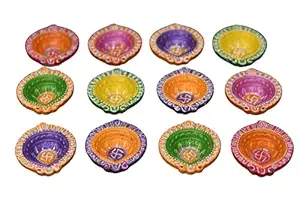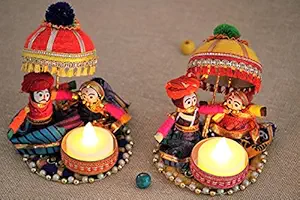हे शम्भू बाबा मेरे भोलेनाथ
हे शम्भू बाबा मेरे भोलेनाथ
तीनो लोक में तू ही तू
श्रद्धा सुमन मेरा मन बेलपत्री
जीवन भी अर्पण कर दूँ ||
हे शम्भू बाबा मेरे भोलेनाथ
जग का स्वामी है तू
अंतरयामी है तू
मेरे जीवन की अनमिट
कहानी है तू
तेरी शक्ति अपार
तेरा पावन है द्वार
तेरी पूजा ही मेरा जीवन आधार
धुल तेरे चरणों की ले कर
जीवन को साकार किया ||
हे शम्भू बाबा मेरे भोलेनाथ
मन में है कामना
और कुछ जानू ना
ज़िन्दगी भर करू
तेरी आराधना
सुख की पहचान दे
तू मुझे ज्ञान दे
प्रेम सब से करूँ ऐसा वरदान दे
तुने दिया बल निर्बल को,
अज्ञानी को ज्ञान दिया ||
हे शम्भू बाबा मेरे भोलेनाथ
हे शम्भू बाबा मेरे भोलेनाथ
तीनो लोक में तू ही तू
श्रद्धा सुमन मेरा मन बेलपत्री
जीवन भी अर्पण कर दूँ
हे शम्भू बाबा मेरे भोलेनाथ ||
The Meaning of Hey Shambu Baba Mere Bhola Nath
Understanding the Lyrics
The bhajan 'Hey Shambu Baba Mere Bhola Nath' expresses deep devotion and love towards Lord Shiva, addressing him as the benevolent Bhola Nath.
Spiritual Essence
The song symbolizes surrender to Lord Shiva, seeking his blessings for peace, happiness, and liberation.
Connection with Devotees
The bhajan builds an emotional connection, reminding devotees of Shiva’s compassion and simple nature.
Why Devotees Sing It
Singing this bhajan helps devotees experience divine energy and a sense of spiritual closeness with Lord Shiva.
Message of the Song
The bhajan conveys that Lord Shiva is always available for his devotees, guiding them through life’s challenges.
Devotional Importance of the Bhajan
Role in Worship
This bhajan is sung during daily puja and temple aartis to invoke Shiva’s divine blessings.
Chanted on Maha Shivratri
On the holy day of Maha Shivratri, devotees sing this bhajan with great energy and devotion throughout the night.
Importance in Temples
Priests and devotees often sing 'Hey Shambu Baba Mere Bhola Nath' together to create a devotional atmosphere.
Group Singing
When sung collectively, the bhajan generates strong spiritual vibrations and unity among devotees.
Part of Shiva Bhajans Collection
This song is a key part of popular Shiva bhajan playlists, connecting devotees with his divine presence.
Cultural and Historical Significance
Roots of the Bhajan
The bhajan has traditional roots in Shaivite devotional practices, emphasizing simplicity and devotion.
Spread Across India
The bhajan has become popular across India, sung in temples and devotional gatherings.
Association with Pilgrimage
Pilgrims chant or sing this bhajan while traveling to sacred Shiva shrines like Kedarnath and Varanasi.
Connection with Folk Traditions
In many rural areas, this bhajan is sung during community gatherings, festivals, and temple fairs.
Role in Festivals
During Shivratri and other Hindu festivals, the bhajan is sung to celebrate Lord Shiva’s glory.
The Emotional Impact on Devotees
Brings Inner Peace
The bhajan helps calm the mind and gives devotees a sense of comfort and security in Shiva’s presence.
Creates Devotional Energy
Singing the bhajan fills the atmosphere with spiritual energy, uplifting the heart and soul.
Encourages Faith
The lyrics strengthen the faith of devotees and remind them of Shiva’s loving and forgiving nature.
Collective Devotion
Group singing of the bhajan enhances unity and a shared spiritual experience.
Inspires Positive Living
The song motivates devotees to live with honesty, compassion, and simplicity like Lord Shiva.
Modern Relevance of the Bhajan
Popular in Devotional Music
The bhajan has gained recognition in modern devotional albums and online platforms.
Adopted in Yoga and Meditation
Practitioners use this bhajan during meditation sessions to increase focus and spiritual calmness.
Global Reach
The bhajan is now sung by devotees worldwide, transcending cultural and regional boundaries.
Use in Spiritual Gatherings
In satsangs, retreats, and online devotional events, this bhajan plays an important role in devotion.
Symbol of Devotion
Today, the bhajan symbolizes timeless devotion to Lord Shiva and inspires new generations of devotees.
The bhajan 'Hey Shambu Baba Mere Bhola Nath' expresses deep devotion and love towards Lord Shiva, addressing him as the benevolent Bhola Nath.
The song symbolizes surrender to Lord Shiva, seeking his blessings for peace, happiness, and liberation.
The bhajan builds an emotional connection, reminding devotees of Shiva’s compassion and simple nature.
Singing this bhajan helps devotees experience divine energy and a sense of spiritual closeness with Lord Shiva.
The bhajan conveys that Lord Shiva is always available for his devotees, guiding them through life’s challenges.
This bhajan is sung during daily puja and temple aartis to invoke Shiva’s divine blessings.
On the holy day of Maha Shivratri, devotees sing this bhajan with great energy and devotion throughout the night.
Priests and devotees often sing 'Hey Shambu Baba Mere Bhola Nath' together to create a devotional atmosphere.
When sung collectively, the bhajan generates strong spiritual vibrations and unity among devotees.
This song is a key part of popular Shiva bhajan playlists, connecting devotees with his divine presence.
The bhajan has traditional roots in Shaivite devotional practices, emphasizing simplicity and devotion.
The bhajan has become popular across India, sung in temples and devotional gatherings.
Pilgrims chant or sing this bhajan while traveling to sacred Shiva shrines like Kedarnath and Varanasi.
In many rural areas, this bhajan is sung during community gatherings, festivals, and temple fairs.
During Shivratri and other Hindu festivals, the bhajan is sung to celebrate Lord Shiva’s glory.
The bhajan helps calm the mind and gives devotees a sense of comfort and security in Shiva’s presence.
Singing the bhajan fills the atmosphere with spiritual energy, uplifting the heart and soul.
The lyrics strengthen the faith of devotees and remind them of Shiva’s loving and forgiving nature.
Group singing of the bhajan enhances unity and a shared spiritual experience.
The song motivates devotees to live with honesty, compassion, and simplicity like Lord Shiva.
The bhajan has gained recognition in modern devotional albums and online platforms.
Practitioners use this bhajan during meditation sessions to increase focus and spiritual calmness.
The bhajan is now sung by devotees worldwide, transcending cultural and regional boundaries.
In satsangs, retreats, and online devotional events, this bhajan plays an important role in devotion.
Today, the bhajan symbolizes timeless devotion to Lord Shiva and inspires new generations of devotees.

मिट्टी के 12 दीये दीपक (विभिन्न रंगों का सेट)
Buy Now
Borosil Medium Size Akhand Diya Decorative Brass Glass Oil Lamp | Tea Light Holder | Diya with Borosilicate Glass | Puja Dia for Mandir | Lantern Diya with Glass Cover
Buy Now